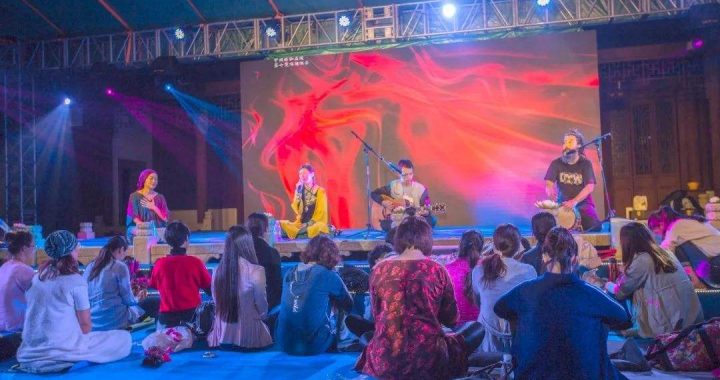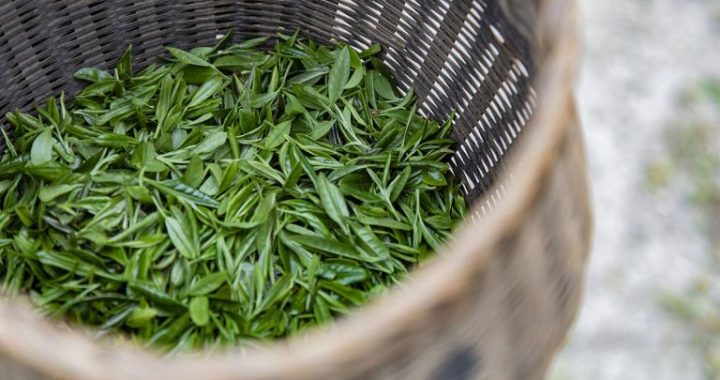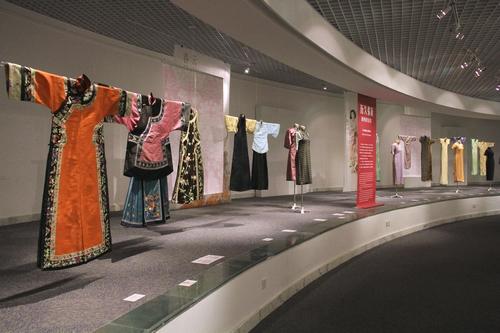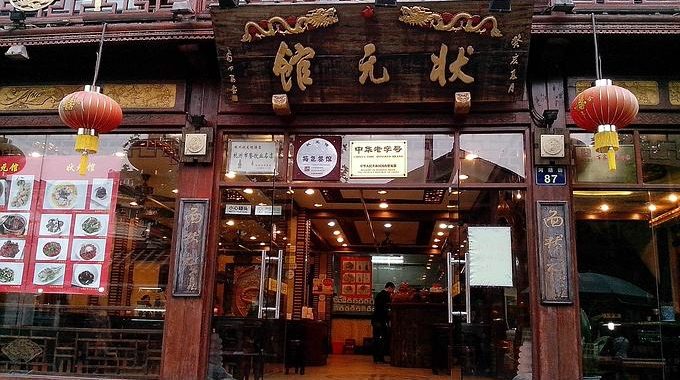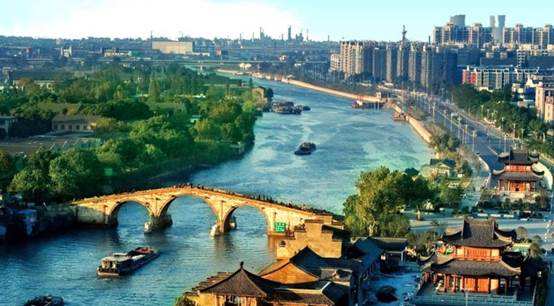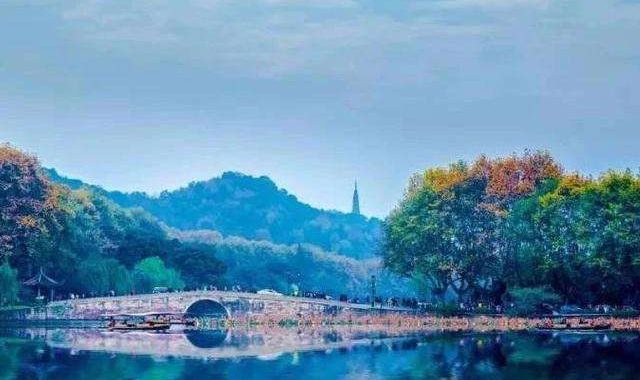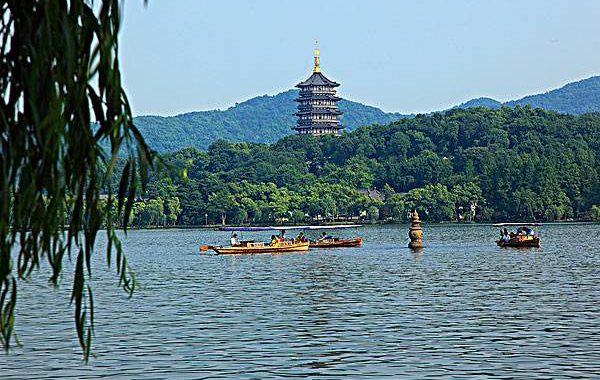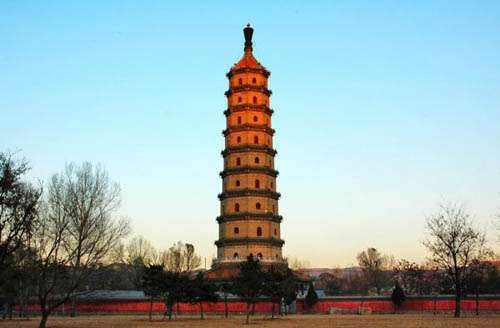Pilgrims Praying for Sunny Days
5 min readIf you spend over a week in Hangzhou,regardless of the time of year,you quickly realize that rain can be a problem.It’s an observation many have made throughout history.Take Monk Zhinan’s famous verse,for example,describing typical southern rain:“Under apricot blossoms the rain hardly wets your clothes,and by willow trees the wind is mild on your face.”He makes it sound pleasant,but don’t believe it.The fact is,gentle as it is,the Hangzhou rain is a constant,patient drizzle that gradually soaks you and even your bed sheets can feel damp with the constant spritz.Despite the apricot and willow and the charming mist on the West Lake,you will be yearning for a clear day and dry shoes.
A thousand years ago,Hangzhou people suffered just the same-though perhaps with a little more panache.While pilgrims elsewhere may have prayed for money,those in Hangzhou prayed most ardently for sunny days.If you feel too dismayed by the incessant Hangzhou rain,do what the locals have done since the Song Dynasty:go to Shangtianzhu Temple and pray for a sunny day.
Around 947,Shangtianzhu Temple was built to house a Guanyin Bodhisattva statue,which was soon said to have uncanny powers in manipulating the weather.When Su Shi,the Northern Song Dynasty poet and intellectual,worked as an government official in Hangzhou,it was part of his job to draft petitions to Guanyin,pleading with her to use her powers to stop the rain so that the city could have a good harvest.After the petition was granted,Su Shi would write another letter to thank her for her kindness.Praying to the Guanyin in Shangtianzhu for sunny days developed into a peculiar Hangzhou tradition,andofficials and emperors followed suit;the last time on record seems to have been Emperor Qianlong in 1757,when he held a ceremony thanking Guanyin for the clear weather.
The Guanyin statue was so famous that it was kidnapped by Jurchen armies and shipped to the North when they invaded Hangzhou in 1130.The first Guanyin statue was long lost to history ever since,and the monastery itself was destroyed and rebuilt numerous times.Today’s Shangtianzhu Temple no longer has a Guanyin prayer hall,just a shrine for a small wooden Guanyin statue.
However,the local memory of the all-powerful Guanyin outlasted the destructions andwars of history.Even today,Shangtianzhu remains a favorite destination for Hangzhou pilgrims.Every morning the bus to Shangtianzhu is packed with gray-haired pilgrims who still call it the“Guanyin Temple”,and believe that the bodhisattva’s extraordinary blessing powers are still strong.
The Three Temples at Tianzhu
There are three monasteries on Tianzhu Road:Shangtianzhu,Zhongtianzhu,and Xiatianzhu.

Shangtianzhu,also named Faxi Monastery,is the largest of the three.It was rebuilt in the 1980s,but in its yard there are magnolia trees and bamboo stalks that are over 500 years old.Its dining hall offers decent vegetarian lunch from 11:00am to 12:30am with an entrance fee of 10 RMB,and lunch runs to about 5 RMB.When you dine ina monastery,you are required to stay quiet throughout the lunch and not to waste food.
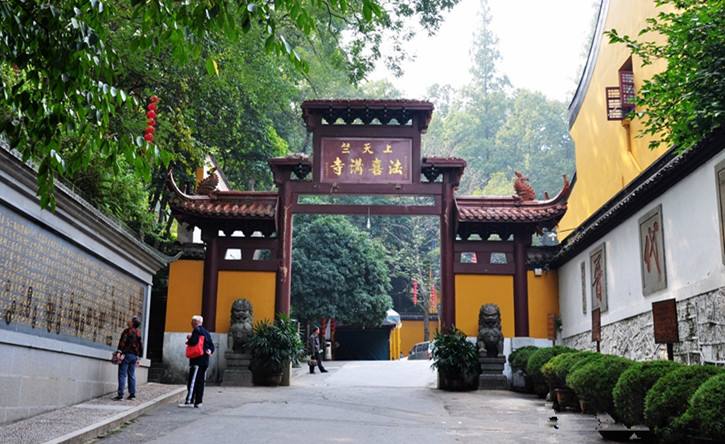
Zhongtianzhu is also named Fa jing Monastery,about one kilometer away from Shangtianzhu,and it’s free to all.If you turn into the quiet,empty path to its north called Zhongfa Road,you will walk past Hangzhou’s first famous boutique hotel,Amanfayun,which is based on the renovation of an century-old tea village,following on,the path leads to the Hangzhou Buddhist Academy.Both the hotel and the college are a nice combination of modern and traditional with pleasant stops for a scenic walk.If you turn left when you arrive at the fork at the end of the road,you will be heading to Lingyin Temple about 1.5 kilometers away.

Xiatianzhu,also named Fa jing Nunnery,is only half a kilometer from Zhongtianzhu.It is the only nunnery in Hangzhou.Dating back to 330 BCE,it is the most ancient temple on Tianzhu Hill,with its ma jor prayer halls built in the late Qing Dynasty.

Admittance is 10RMB.
The Southeastern Buddhist Kingdom
Toward the end of the Tang Dynasty, in 842, Emperor Wuzong started a nationwide crackdown on Buddhist monasteries and monks. With that action, the largest incidence of Buddhist persecution in China’s ancient history had begun. Over the next five years, over 4,600 monasteries were destroyed and 260,000 Buddhist monks and nuns were forced to resume secular lifestyles.The ruthlessness and the massive scale of the persecution was unprecedented,causing Buddhism to lose its prominence in Chinese culture,never to be regained to quite the same extent.
The crackdown spread all the way to the south,and even the Lingyin Temple,one of Hangzhou’s earliest and biggest monasteries,wasn’t immune.
As Buddhism went into its downfall,the powerful Tang Dynasty was also facing its doom and was soon divided into many kingdoms.Lingyin and other monasteries in Hangzhou remained in ruins until in 907,when a new regime,the Wuyue Kingdom,ruled the area.The Wuyue Kingdom was relatively small-covering only today’s Zhe jiang Province and part of Jiangsu and Fujian-but during the 72 years of its reign,it brought peace and prosperity to the land.Its rulers,also,were all devoted to the revival of Buddhism.
Hundreds of monasteries were built in the mountains surrounding West Lake,and thekingdom attracted the top intellectual monks who found it a haven from the social upheavals and wars in the north.The kingdom is remembered as the“Southeastern Buddhist Kingdom”,a name still in use to refer to the area.
The Wuyue Kingdom’s first ruler,Qian Liu,invited a nationally-renowned monk,Venerable Master Yanshou,to rebuild Lingyin.Under constant expansion,by themid-tenth century,Lingyin again became one of the most magnificent monasteries in southern China,with 72 prayer halls and over 1,300 rooms housing over 3,000 monks.
Venerable Yanshou also supervised the construction of the giant Liuhe Pagoda,which was built to tame the flood-bringing dragon in the Qiantang River.
During the Southeastern Buddhist Kingdom period,some significant changes happened in Buddhism and those changes endure even today.The Pure Land practice-a simplified way of practicing Buddhism that emphasized religious piety over philosophical thinking,with Venerable Yanshou as one of its key champions-gradually evolved into an overwhelming trend.By the Song Dynasty,Pure Land societies had already mushroomed across the country.In the Tang Dynasty,Chinese Buddhism had been scholarly and philosophical,but with the popularized Pure Land practice,Buddhism took a drastic turn toward secularization.It was no longer so associated with elitism,but rather became accessible for all,regardless of their class and education,and brought spiritual solace to scholars,officials,and ordinary people alike.New idols were created catering to the religious imagination of the masses,such as the merciful Guanyin and the fat,merry Maitreya Buddha,both becoming popular Chinese cultural icons.
